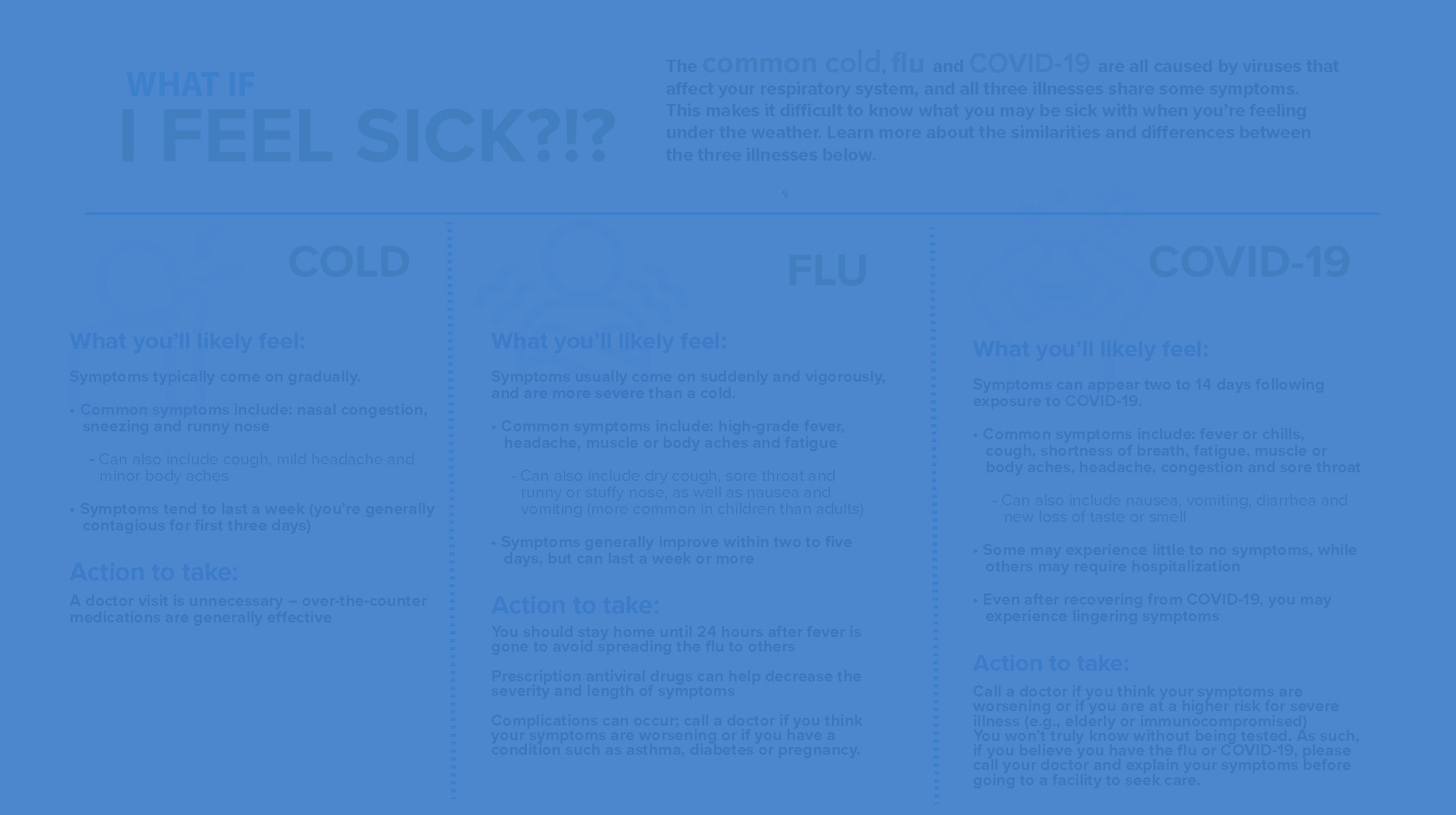Prepare for Flu Season During the COVID-19 Pandemic
Prepare The Workplace. Is It Cold, Flu, or COVID-19?
Each year, the seasonal flu has a marked impact on businesses and employers, causing increased absenteeism, decreased productivity, and higher health care costs. The past few flu seasons have seen high hospitalization and mortality rates, which has public health experts fearing another deadly flu season.
Last Updated on February 26, 2021
Help Your Employees and Business Stay Healthy
Unfortunately, the 2020-21 flu season isn’t the only health crisis employers and employees have to address this year. The COVID-19 pandemic is still affecting the workforce. The combination of another potentially bad flu season and the pandemic has public health experts worried.
As an employer, you are well-positioned to help keep your employees healthy and minimize the impact that influenza has on your business. The Centers for Disease Control and Prevention (CDC) recommends strategies to help employers fight the flu and talk to employees about what a flu season during the pandemic looks like.
Educate Employees on the Flu vs. COVID-19
Unfortunately, because the flu and COVID-19 are both contagious respiratory illnesses, some of the symptoms are similar. For example, common flu symptoms include the sudden onset of fever, headache, fatigue, muscle aches, congestion, cough, and sore throat. All of those are currently considered symptoms of COVID-19.
One of the difficult aspects of the COVID-19 pandemic is that the symptoms are wide-ranging and vary in severity. Some with COVID-19 may experience little to no symptoms, while others may be severely ill and require hospitalization.
Due to the similarity in symptoms between COVID-19 and the flu, it may be difficult to determine whether an employee has the flu or COVID-19 without being tested. As such, it’s important to encourage employees to stay home if they are sick.

Consider allowing employees to work from home if they’re healthy enough to complete their work or while they wait for test results. Encourage employees to take paid time off if they need to. If an employee tests positive for COVID-19 and needs to take time off to recover, they may be eligible for leave under a multitude of federal and state laws.
Preparing Your Workplace for Flu Season During the Pandemic
There are a variety of steps employers can take to protect employees and prepare for flu season—which may include steps you’ve taken in response to COVID-19—regardless of whether employees are in the office or working remotely.
Here are some strategies to consider:
Host an On-Site, Socially Distanced Vaccination Clinic
One of the most important steps for preventing the flu is to get an annual flu vaccination. The CDC recommends that all people over the age of 6 months get a flu vaccine each year.
Hosting an on-site flu vaccination clinic can help educate employees about the importance of vaccination and make it easier for them to get vaccinated.
Encourage Employees to Get the Flu Vaccine
If you choose not to or are unable to provide an on-site flu vaccination clinic, you can still emphasize the importance of vaccination to your employees and educate them about local opportunities to get vaccinated.
Disinfect and Clean the Office
Because the flu virus and the virus that causes COVID-19 can remain on surfaces long after they’ve been touched, it’s important that your business frequently cleans and disinfects the facility. Some best practices include:
- Cleaning and disinfecting all frequently touched surfaces in the workplace, such as workstations, keyboards, telephones, handrails and doorknobs.
- Discouraging workers from using other workers’ phones, desks, offices, or other tools and equipment, when possible. If necessary, clean and disinfect them before and after use.
- Providing disposable wipes so that commonly used surfaces can be wiped down by employees before each use.
Implement and Enforce Social Distancing Protocols
Social distancing is the practice of deliberately increasing the physical space between people to avoid spreading illness. Social distancing best practices for businesses can include:
- Avoiding gatherings of 10 or more people
- Instructing workers to maintain at least 6 feet of distance from other people
- Hosting meetings virtually when possible
- Limiting the number of people on the job site to essential personnel only
- Leveraging work-from-home arrangements and staggered shifts when possible
- Discouraging people from shaking hands
Employee Safety Training: Respiratory Etiquette and Hand Hygiene
Ensure that all employees understand how they can prevent the spread of COVID-19 and the flu. Businesses should encourage good hygiene to prevent the spread of respiratory illnesses like the flu and COVID-19. This can involve:
- Providing tissues and no-touch disposal receptacles
- Providing soap and water in the workplace
- Placing hand sanitizers in multiple locations to encourage hand hygiene
- Reminding employees to not touch their eyes, nose or mouth
- Asking employees to wear a mask or face covering when social distancing is not possible
Staying Home When Sick
Encourage employees to err on the side of caution if they’re not feeling well, and stay home when they’re sick or are exhibiting common symptoms of COVID-19 or the flu.
HR Assistance for COVID-19
The combination of COVID-19 and flu season could have a significant impact on your business this fall and winter.
These strategies may not be right for every organization. Depending on the nature of your business, you may need to implement additional prevention strategies.
Contact MyHRConcierge to speak with an HR expert with any concerns or questions you may have. Call us at (855) 538-6947 ext. 107 or email ccooley@myhrconcierge.com today.

